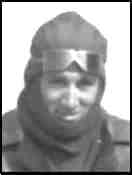
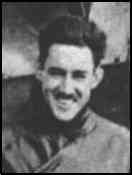
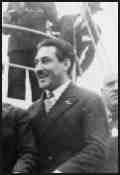
Curtiss Flying School
Newport News.
The Garden City Archives.
Courtesy of
Laurent Brocard
The Flying Pioneers.

| 
| 
| ||
| 1917 Curtiss Flying School Newport News. |
Courtesy of The Garden City Archives. |
1927 Courtesy of Laurent Brocard The Flying Pioneers. |
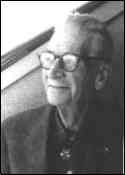
| ||
| Waldo Waterman, 1971. |
|
1905 Bert had entered the fourth grade in midterm and was assigned a seat near me, in the rear near the window. One day the teacher looked up and saw Bert's jaws moving as if he were chewing gum, a forbidden sin. As was the custom when anyone was caught doing such a dreadful thing, the teacher picked up her ruler and walked down the aisle, prepared to give the offending student a good swat. She said, "Bert, spit it out!" and Bert sure did spit it out with a great big splatt! It wasn't chewing gum, but tobacco that he was chewing and for that he was immediately marched down to the principal's office. That's the last I ever saw of him around Middletown Grammar School Arsdalen, Bosch & Co.,., 1988 1914 Bert was a mechanic for Glenn Curtiss at North Island, California. Ray Morris was in charge of instruction. He had a Curtiss pusher with 4 cylinder Curtiss engine, called a grass cutter or sort of primary trainer. Plane would barely fly, but as students had to fly solo, they had the throttle tied down, so all they could do was run along the ground to get the feel of the plane. As they advanced, the stop was taken off the engine so they could fly low and straight hops. Morris discovered that Acosta was taking the plane out and flying it himself, early in the mornings before anyone was on the island. 1916 "I first met Glenn Curtiss in 1925 at the National Air Races, Mitchel Field, Long Island. He was sitting in a Curtiss pusher which had been prepared by the Curtiss Company as a contrast to the Curtiss Racers which were competing in the Pulitzer Race. Bert Acosta flew the pusher in a fly-past at low altitude at about a fifth of the speed being flown by Cy Bettis and Al WIlliams in the R3C-2 racers." 1916 In addition to Walter, the Curtiss School had the following instructors: Vic Carlstrom, Vic Vernon, Jimmy Johnson, Lawrence Leon, Bert Acosta, and Andrew "Stew"Cogswell. 1917 Early in March of 1917, the prototype of the Canadian JN-4 was test flown at the old Curtiss Aerodrome at Long Branch, Ontario. Its pilot, who had previously been employed by the Curtiss school and who came north especially for this task, was Bert Acosta. 1920 We hauled our partially finished bat-wing plane, fitted with a new experimental Packard eight-cylinder engine to the Packard Company's small field, just east of Detroit toward Mt. Clemens. We all went out to Packard Field early in the morning. Bert Acosta, a leading test pilot, was to fly the ship for the first time. Not only had the plane never been flown, but there had never even been a wind tunnel test of the model. No one had inspected our structural analysis to see if the thing would hold together. At that time, no inspection was required, of course, for no government regulation of flying had yet bee extablished. Acosta, after warming up the engine, swung into line, opened up wide and, the first thing we knew, was off the ground, up over the wires and heading toward Detroit. He stayed up about twenty minutes over Detroit, swung around over the St. Clair River and, after flying over Packard Field, came back in for a landing. As he flew over the field, we saw one tragic thing. On the takeoff, the plain bearings had evidently gone dry in one wheel, twisting the cap off the axle. So here came Bert in to land with only one wheel on his airplane. We expected catastrophe and tried every means of signaling we had to show him what was up. He came in, however, set the plane down on one wheel and held it there until the wings lost their lift. When the empty axle touched, the plane gently went over on its back and Bert climbed out unhurt. The plane was fixed within a few days and sent out again to fly. Autographed: To Walter Lees, whose skill and quick thinking saved the day --- and him too., Sincerely, Bill Stout, Nov. 1952 1921 "My first glimpse of an airfield came on Halloween Eve of 1921. We got off the Toonerville Trolley and walked toward our new home, smack in the middle of Curtiss Field. I remember the kids were already out trick or treating, wearing costumes like devils and skeletons, but nothing they wore could have stunned us more than the first airplane we saw. We were walking along this grassy field where Macy's department store stands today, and here comes this flying machine. It seemed to be bearing down on us, tail high, propeller spinning, roaring like a thousand buzz saws. I was sure it was going to slash right through my whole family. but it rose triumphantly from the ground like an awkward bird and passed over our heads, belching clouds of black smoke. Later I found it was Bert Acosta, the bad boy of aviation, an Errol Flynn type, fond of liquor and women. Acosta was hanging around a bar and nobody knew what time it was. He jumped in his plane, flew a circle around the Metropolitan Life Lock Tower in manhattan, and flew back to the bar to give a report. A few years later I was bringing him cigarettes at the county jail where he was cooling off for a few days." E. P. Dutton, 1979 |
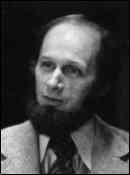
| 
| ||
| GEORGE VECSEY, author of the bestselling Loretta Lynn and many other books for both children and adults, currently writes about religion for the New York Times. He lives on Long Island with his wife and three children | GEORGE C. DADE is Director of the Cradle of Aviation Museum at Mitchel Field, Long Island, president of various aviation clubs, and recipient of numerous aviation history awards. He grew up in a former aviator's barracks at Curtiss Field, Long Island, and subsequently founded an airplane packing business. He is married and has three children. |
|
1921 ACOSTA WON OMAHA CONTEST November 3, The 1921 race was to have been held in Detroit, but assurance that the army and navy flyers could be sent to take part was not forthcoming, it was said, and athe plans were canceled. The Aero Club of Omaha, Neb., then flew into the breach, and with financial aid of citizens arranged the International Air Congress with the Pulitzer race, Nov 3, 1921, as its chief attrraction. There was a throng of spectators and a good field of contestants at the race in Omaha. The course was a 20-mile triangle and the distance 150 miles. This time, Bert Acosta, a civilian, of the Aero Club of New York, won with a speed of 176 miles per hour, about four miles an hour below sthe winning rate of the year before, Second place went to another civilian, C. E. Coombs of New York, flying for S. E. J. Cox, wealthy Texas oil man. Lieut. John A. MacReady, co-holder of the record for the recent transcontinental flight, came in third. 1921 November 27, It had been planned that the Next Pulitzer Race would be transcontinental in November, 1920, probably with the arrangement that pilots might pick their own flying days within a specified period. The route was to have been over a proposed air mail route, from New York to San Francisco, via Chicago, Omaha, Salt Lake City and Reno. However, it was decided later that such a contest had "little merit from every standpoint," and it was canceled in favor of a 150-mile speed test at Mitchel Field, Long Island, Thanksgiving day, 1921. The donors of the trophy readily agreed to the change and to a request that gold, silver and bronze plaques to be given by them annually for the pilots winning first, second and third places. There were at least 40,000 persons at Mitchel Field for the event, in which 34 planes started, with a triangular course for a distance of 132 miles. Capt. C. C. Mosley, U. S. A. , the winner, made an average speed of three miles a minute with a Verville racing plane equipped with a Packard-Liberty motor. He flew as a representative of the Aero Club of Southern California. Capt. H. E. Hartney, U. S. A., took second place with a Thomas Morse plane and Wright-motor, and Bert Acosta, civilian, of New York, was third, with an Italian plane. There were no serious accidents. 1925 The National Air Museum is custodian of a Curtiss headless pusher which was assembled in 1925 from original parts dating back to 1909. It was last flown in 1925, when, at the national air races of that year at Mitchel Field, Glenn Curtiss sat in it and then Bert Acosta piloted it in a thrilling contrast to the racing planes of that year. 1927 In the spring of 1927, three planes gathered at the best field in America, the Roosevelt-Curtiss complex on Long Island. Byrd, in his repaired Fokker, made last minute adjustments in the early days of May. Charles Levine's powerful Wright-Bellanca WB-1, Columbia/NX-237, proved it could endure the time barrier of an ocean flight when Clarence Chamberlin and Bert Acosta kept it aloft for fifty-one hours over Roosevelt Field. But the ocean may have seemed a more formidable barrier than the clock, and Levine was still puttering with the plane and arguing with his pilots when Charles Lindbergh arrived on May 12. E. P. Dutton, 1979 June 29-30 Cdr. Richard Byrd, Bertrand B. Acosta , Rex Neville and Bernt Balchen flew the Fokker monoplane America from New York to a crash landing in the sea off the French Coast. Aeronautical and Astronautics Chronology, 1925-1929 http://www.hq.nasa.gov/office/pao/History/Timeline/ |
|
1997 The Shrine to Aviation and Museum, is a 75 foot tall old world structure of marble, mosaic, and sculpted figures located at Pierce Brothers Valhalla Memorial Park in North Hollywood. It is the burial site for 13 pioneers of aviation, including Bertrand B. Acosta and on Memorial Day 1996 was re-dedicated as an aviation museum. Built in 1924 as the entrance to Pierce Brothers Valhalla Memorial Park, it was dedicated in 1953 as a Shrine to Aviation by aviation enthusiasts who envisioned a final resting place for pilots, mechanics and other pioneers of flight.
Memorial plates on the walls include honors for Amelia Earhart, Richard E. Byrd, and Brg. General William Mitchell. If you have information regarding any of these pioneers to share with others, or have questions about the aviation museum, please contact: Portal of the Folded Wings 10621 Victory Boulevard North Hollywood, CA 91606 Telephone: (818) 763-9121 Fax: (818) 763-3801 This from The Portal of the Folded Wings webpage is searching for more information on her grandfather. If you can offer her any help, she would be very grateful. You may contact her by E-Mail at Frysl@aol.com Back 
 |